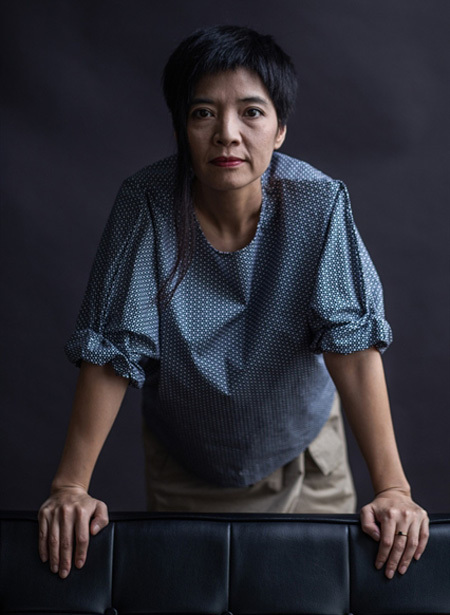Project promotes traditional art genre
Festival director strives to keep tradition alive
Traditional arts programme targets young audiences
 |
| Musician Tran Kim Ngoc |
Why are you and your team involved in the Future of Tradition?
Actually, it is an independent project that Đom Đóm plays an advisory and supporting role in only. I talk a little bit about the centre's activities which cover training and creative foundation programmes to provide creative spaces for artists to connect with the community, new music festivals and audience development programmes.
This project is part of the creative foundation. It was launched by a group of young people led by a current member of Đom Đóm, young musician Ha Thuy Hang with the advice of musician Nguyen Xuan Son.
Đom Đóm plays the role of a sponsoring organisation as well as supporting content development for the project.
At the beginning, the group was supported by Đom Đóm and musician Son in particularly. Then they applied for funding from Famlab of British Council which supports art activities connecting heritage and film.
Famlab agreed to provide funding to carry out the project.
What activities does the project include?
The project has two parts. First, young artists will participate in staging and performing a new music piece using traditional materials and an experimental piece by Son using tuong (classical opera) and cheo (popular opera).
The second part began in March focusing on community. This part includes a series of intensive talks with artisans from many traditional art genres such as tuong, cheo and cai luong (reformed theatre) and contemporary artists like curator and visual artist Tran Luong, experimental documentary filmmaker Nguyen Trinh Thi, lacquer artist Nguyen Oanh Phi Phi, visual artist and performer Nguyen Huy An and me.
We learn from traditional artisans and listen to leading contemporary artists from many fields who share the same deep interest in traditional art and their work has a strong connection with indigenous Vietnamese culture.
Each artist has a completely different approach for art heritage as well as indigenous culture, creating a rare attraction and utility for the series of talks.
What do the young artists get from the project?
Just like in the training classes or other programmes of Đom Đóm it is different depending on the musical background of the participants. There are many people from the western classical music environment who are well trained and have professional performing skills.
Others play traditional instruments. There are a few young people who are self-taught but are gaining notoriety in the entertainment industry or underground.
Thanks to their diverse musical backgrounds, the young artists have a chance to work together to cultivate a new musical language.
Does Đom Đóm have any other projects for the development of traditional art?
Two years ago Đom Đóm planned to do a big programme to preserve five genres of traditional art. We wanted to find and contact all living artisans and choose young artists who would be taught and trained by the artisans.
Unfortunately due to a lack of funding this programme has not been implemented and some artisans have passed away. Preserving intangible culture needs to be done quickly before it's no longer available.
How does the project contribute to the development of traditional art?
This project is small and has a very short duration of only six months. So its impact is more limited than ambitious.
However, short-term projects aim at specific goals creating opportunities that long-term projects cannot bring. We try to support the young artists so that they can do their best.
Son was born and raised in a traditional music family. He has a close relationship with all artisans. He and I can also help the young artists to connect with pioneering contemporary artists from many fields.
I hope that in the future Đom Đóm will continue to implement many other large and small projects to preserve cultural heritage.
What is the future of tradition?
I think the future of tradition will come to life. It will be continuous and transformed. But what we need to do now is to create as much connection as possible because as I said above that Vietnamese culture has broken periods.
What we need to do is to create meetings and exchanges so that traditional culture develops naturally. Connecting with tradition is very important. Artists who want to find their origin have to come back to traditional and indigenous art culture to reflect, reconnect and nurture what sprouts.
VNS
 Pham Ngoc, a reporter from Lao Động Cuối Tuần (Weekend Labour) interviews musician Kim Ngoc, director of Đom Đóm — the Hub for Experimental Art & Music, which is helping run the Future of Tradition project on traditional and contemporary art.
Pham Ngoc, a reporter from Lao Động Cuối Tuần (Weekend Labour) interviews musician Kim Ngoc, director of Đom Đóm — the Hub for Experimental Art & Music, which is helping run the Future of Tradition project on traditional and contemporary art.